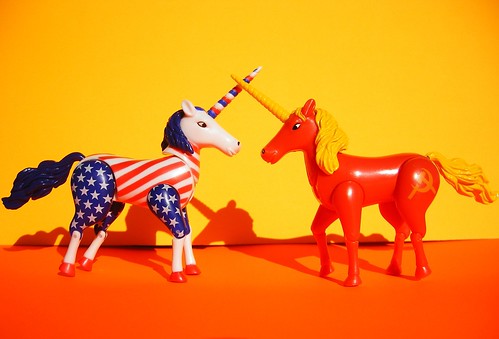Creative Commons Resources
What is Creative Commons?
Work that has been licensed using Creative Commons makes it easier for people to share and build upon the work of others. Under a Creative Commons license, you can use or download music and images for use in your school work free and legally. The author/owner of the work is not giving up all of his or her ownership rights to the work but s/he is allowing us to use their work without asking for permission, provided that we follow a few conditions that they have set.
It does take a little bit of time and effort to find and attribute media that you can use legally and ethically, but it is important for all teachers and students to model respect for the creative work of others and how they wish for it to be used. It is better to make an effort to attribute your work and do it incorrectly (at first) than it is to not do it at all!
The Conditions
Different licenses have different conditions. The most common ones are:
These conditions can be mixed in a number of ways so make sure you find the license symbol and figure out what the author will allow you to do with their work. Click here to see all of the Creative Commons licenses.
Attributing The CC Licensed Work
If you are only attributing the image in your work (blog post, wiki, PowerPoint presentation, etc) then you should include the author’s name, the name of the work and the Creative Commons license. When possible, it is considerate to link back to the original location of the work. For example:

Communist vs Capitalist Unicorns by zoomar licensed under CC BY NC SA
An easy way to remember what to include in your attribution is the acronym TASL:
- T: Title of the work
- A: Author of the work
- S: Original source of the work
- L: License that the work is published under.
If you are using images from flickr, you can install the Flickr CC Attribution bookmarklet created by Alan Levine to automatically generate a bit of code that you can then paste into the text editor of your blog. This will then put in an image with a caption that includes all of the license information!

flickr photo shared by zoomar under a Creative Commons ( BY-NC-SA ) license
If you are including a thorough bibiliography with your work, use proper MLA or APA referencing for digital images and add the Creative Commons license information as an annotation. For the image above it would look like this:
Zoomar. Communist vs Capitalist Unicorns. Digital image. Flickr. 05 May 2006. Web. 22 Nov. 2009. <http://www.flickr.com/photos/zoomar/141097522/>. CC BY NC SA
Finding CC Licensed Media
There are loads of places you can download CC-licensed work. You just need to know where to look!
General Search
- Creative Commons Search – A general site that links to a bunch of different search engines.
- Google Advanced Search – Google gives you the option to include forms of licensing in your search.
- Yahoo Creative Commons Search – Yahoo allows you to search the entire web for what you need based on the licenses attached to the content.
- Wikimedia Commons – The central clearing area for the Wikimedia projects CC files.
Images
- FlickrCC – My favorite visual search engine of Flickr
- Pixabay – Images that are licensed under the public domain. You don’t need to give any attribution, but it is a nice gesture!
- Advanced Google Image Search – Labeled for Reuse
- Flickr – check the Creative Commons box at the bottom
- Compfight – Be sure to select “Creative Commons Only”
- Wikimedia Commons
- Flickr Search with CC license stamp
- The Noun Project – free icons for download with attribution (free account required; use your ISB email address)
- Flat Icon – more free icons for download with attribution
Audio
- YouTube Audio Library – Searchable library with songs and sound effects.
- Dig CC Mixter – Lots of search options available. Great for audio or video projects.
- Free Music Archive – Similar to CC Mixter with lots of different search options. Great for video projects.
- SoundSnap – For sound effects
- Jamendo
Thanks to Mashable.com and Drape’s Takes for the resources.


Recent Comments